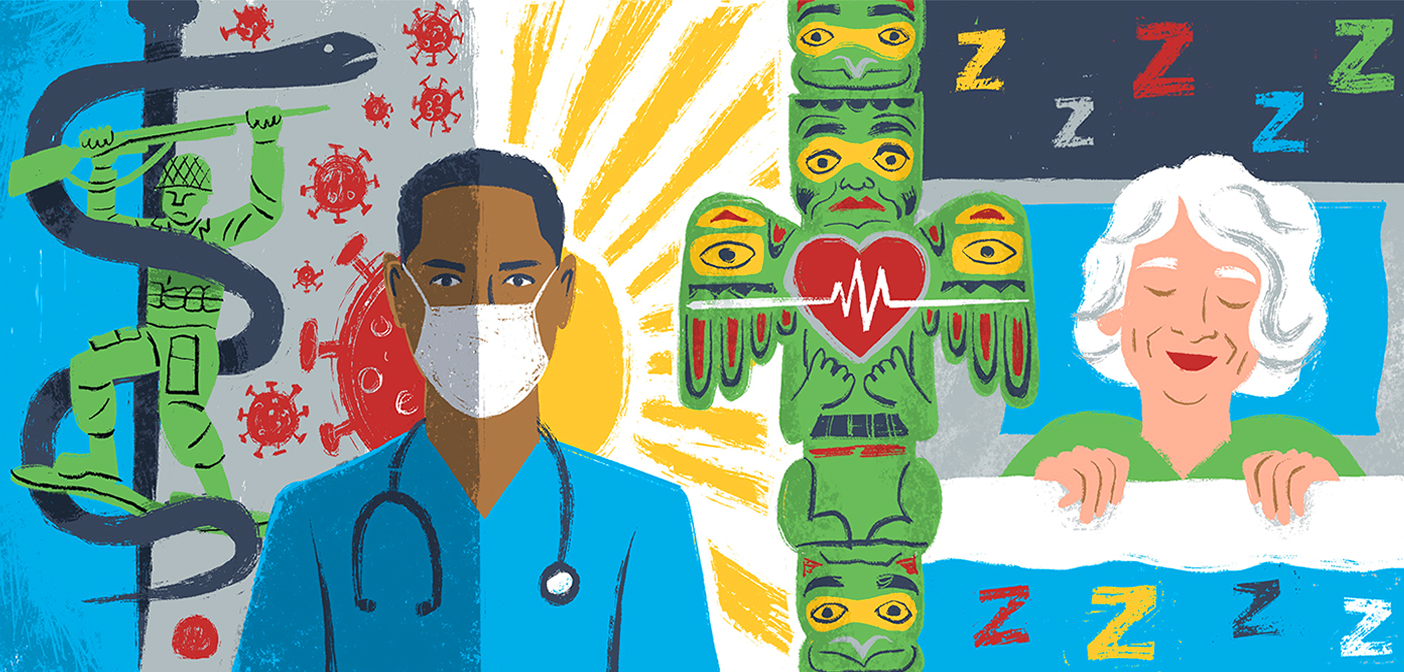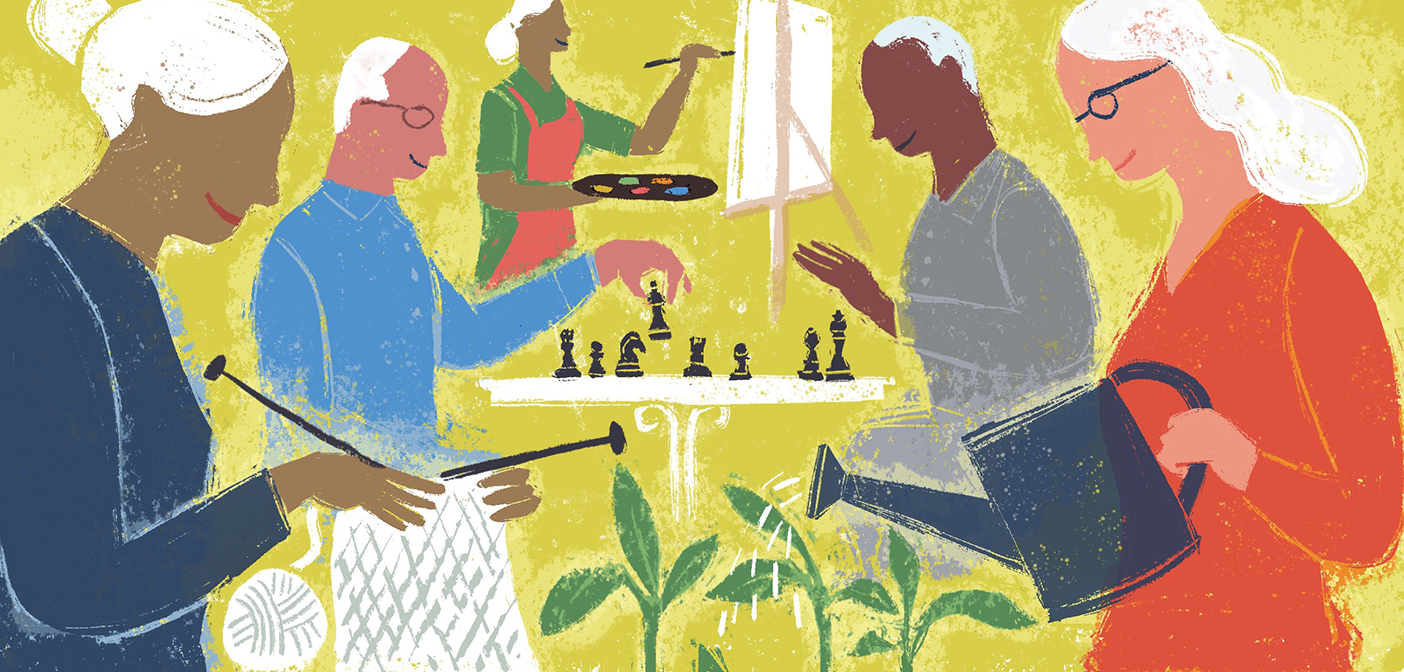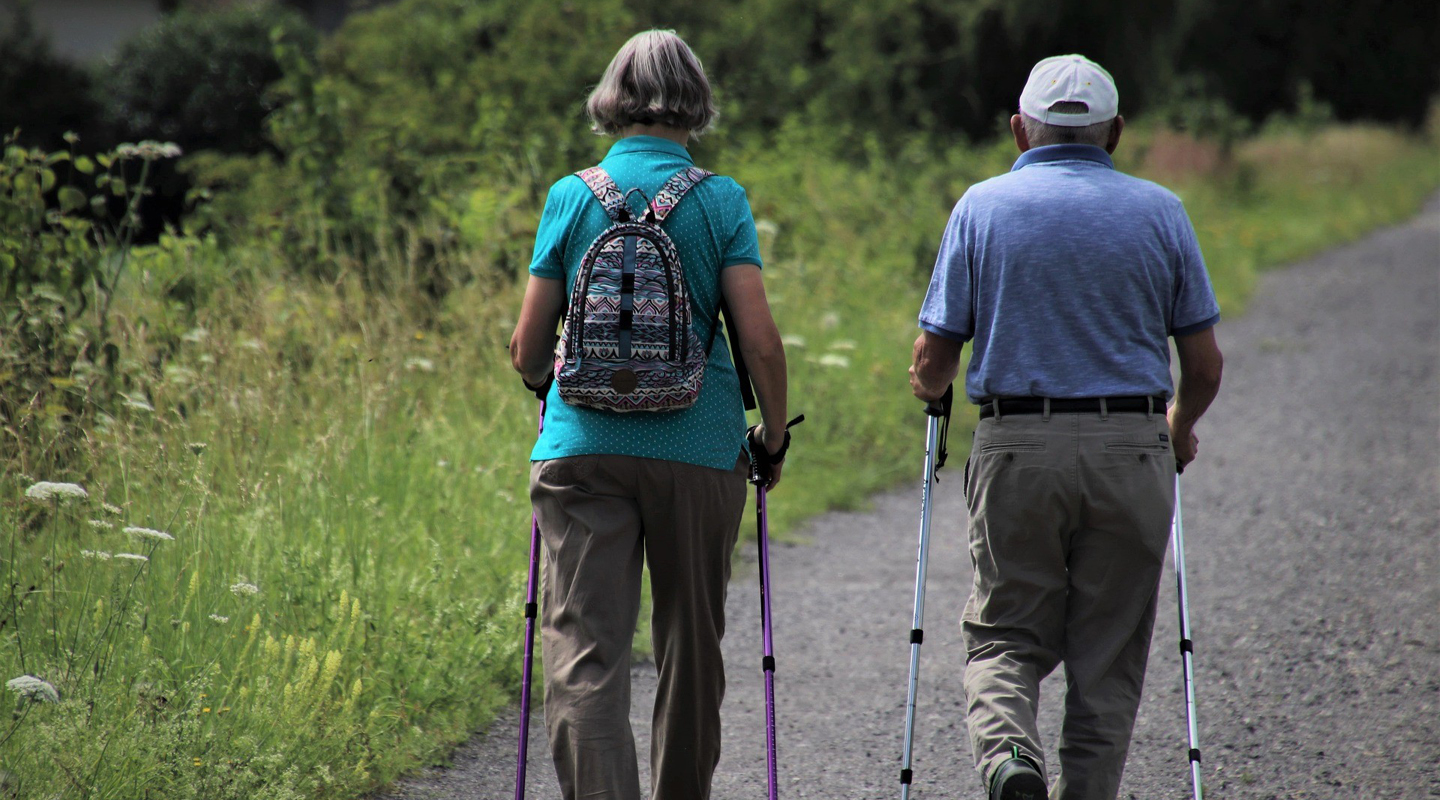Think about the last time you pushed a door you were supposed to pull.
Like in Don Norman’s famous “Norman Door” example, we tend to blame ourselves for “misusing” products or repeating embarrassing mistakes. But it’s the designer’s job to build a product that not only looks aesthetically pleasing, but that passersby intuitively understand how to use.
Hi! We are Anushka Jajodia and Erika Hornstein. Our roles are a bit unconventional, so we thought we’d take a moment to explain what we do and how we can be a resource for you.
We support research projects using human-centered design methods–this approach involves the human perspective in all steps of the problem-solving process. Anushka primarily focuses on the PROMOTE Center pilot studies and Erika focuses on various projects within the Center for Innovative Care in Aging. So, let’s take a look at what “human-centered design” means.
Take the ‘Norman Door’ example. Using human-centered design principles, how can we build a better door?
- Explore the Problem Space – Understand the entryway from the perspective of the person who will use it. Listen. Observe. Question.
- Define the Problem – Now that you really understand the problem’s context, you can define the challenge better than when you started. After you specify the problem to solve, you have benchmarks to measure your success.
- Brainstorm – Identify opportunities to develop the design with diverse stakeholders. At this stage, go for quantity over quality. No idea is a bad idea. Use constraints to breed creativity.
- Build a Prototype – Choose the most relevant ideas and create simple models via structures, drawings, cardboard cutouts, wire frames, storyboards, or even role-playing to share ideas in a tangible form.
- Test the Idea – It’s time to share the prototype. Ask for feedback–does the idea solve the challenge you defined in Step 2? (Does your targeted user know how to enter the doorway without hesitation? Do they enjoy the experience?) Based on the collective feedback, return to the most appropriate phase to design a better solution. Repeat until the stakeholders are satisfied!
We can all relate to the Norman Door, but the human centered design process is applicable well beyond door design. In health care, this approach helps inspire ideas and validate individuals’ lived experiences, especially those that can be messy. It’s growing in popularity; we use it to design physical space, digital interfaces, clinical workflows and behavioral interventions – which brings us back to us, Anushka and Erika.
Conceptual sketch review as part of a brainstorm on how CAPABLE can “scale with values.”
Developing prototypes for virtual yet meaningful CAPABLE training experiences.

We’re here to build a culture of human-centered design throughout Johns Hopkins School of Nursing! Intrigued about using human-centered design practices in your research or to solve another messy problem? We’ve got you covered.
- Email Anushka Jajodiato schedule a 1:1 session
- Visit Erika Hornsteinat 511 Washington St. to borrow a book (or she’d be glad to bring it to you)
- Attend the upcoming workshop “Framing the Right Challenge” as part of the Intervention Working Group on January 15th from 9-10AM SON 510
- Lookout for other upcoming workshops to build your human-centered design skills
Learn more:
ABOUT THE AUTHORS
Erika Hornstein serves as the Design Strategy Manager for the Center for Innovative Aging at Johns Hopkins School of Nursing. In this role, she integrates human centered design approaches to behavioral intervention research pertaining to aging in place for older adults. Erika earned her MA/MBA in Design Leadership from the Maryland Institute College of Art and Johns Hopkins Carey Business School. Previously, she worked in design strategy roles at the Green & Healthy Homes Initiative and athenahealth and in consulting and product development capacities at Deloitte.
Anushka works as a Social Design Fellow at The Promote Center at Johns Hopkins School of Nursing. She received her Master’s in Social Design from Maryland Institute College of Art, Baltimore and Bachelor’s in Visual Communication and Design from Ecole Intuit Lab, Mumbai. Emotions and intuition drive her soul, creation, and engagement as an evolving social justice designer who is moving through time as a design researcher, visual designer, illustrator, poet, and photographer.



 Growing CAPABLE
Growing CAPABLE Summer Research Roundup 2023
Summer Research Roundup 2023 Summer Research Roundup 2022
Summer Research Roundup 2022 Aging? Do What You Love and Live Better
Aging? Do What You Love and Live Better The Confidence to Fend Off Frailty
The Confidence to Fend Off Frailty







